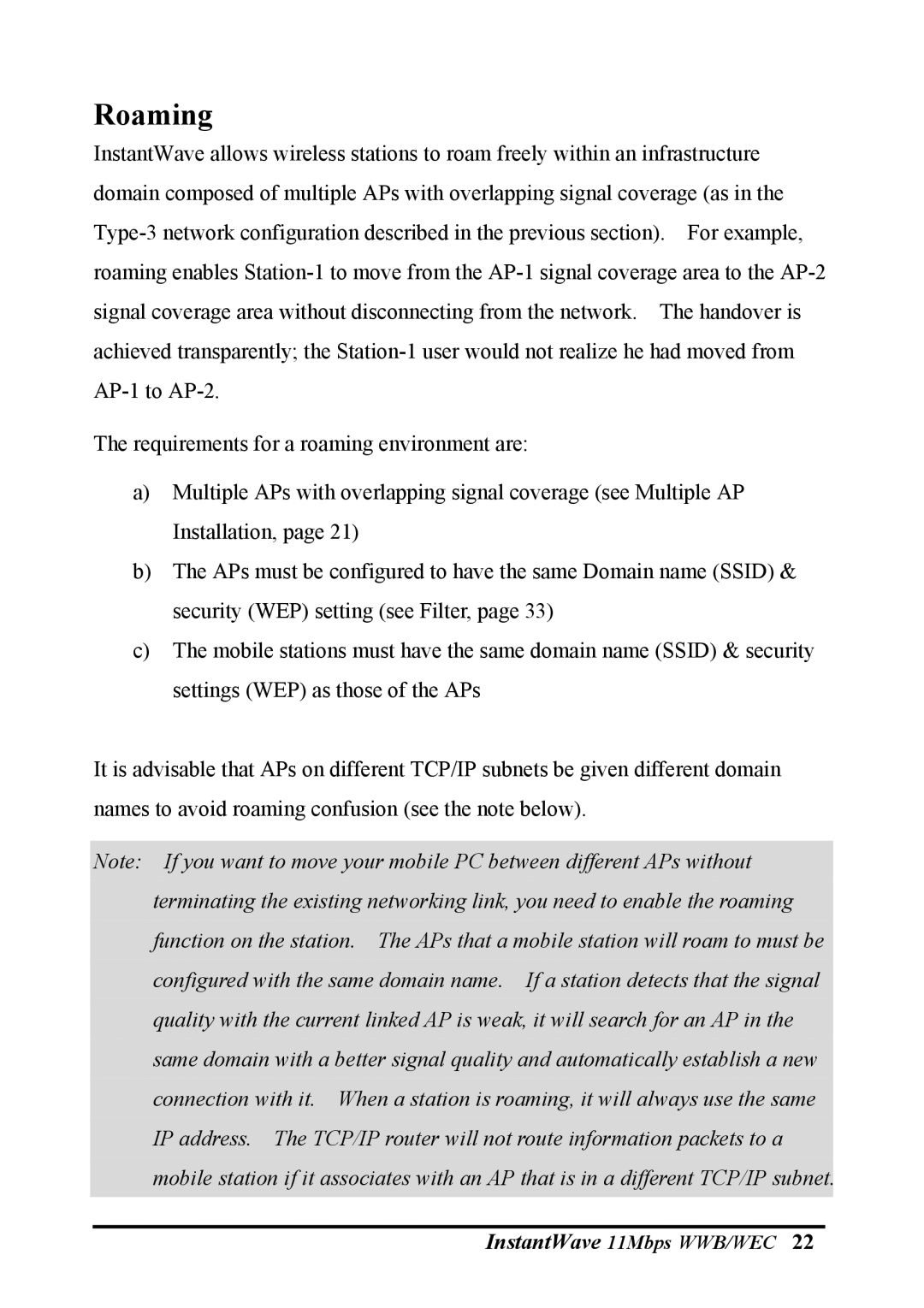
Roaming
InstantWave allows wireless stations to roam freely within an infrastructure domain composed of multiple APs with overlapping signal coverage (as in the
The requirements for a roaming environment are:
a)Multiple APs with overlapping signal coverage (see Multiple AP Installation, page 21)
b)The APs must be configured to have the same Domain name (SSID) & security (WEP) setting (see Filter, page 33)
c)The mobile stations must have the same domain name (SSID) & security settings (WEP) as those of the APs
It is advisable that APs on different TCP/IP subnets be given different domain names to avoid roaming confusion (see the note below).
Note: If you want to move your mobile PC between different APs without terminating the existing networking link, you need to enable the roaming function on the station. The APs that a mobile station will roam to must be configured with the same domain name. If a station detects that the signal quality with the current linked AP is weak, it will search for an AP in the same domain with a better signal quality and automatically establish a new connection with it. When a station is roaming, it will always use the same IP address. The TCP/IP router will not route information packets to a mobile station if it associates with an AP that is in a different TCP/IP subnet.
